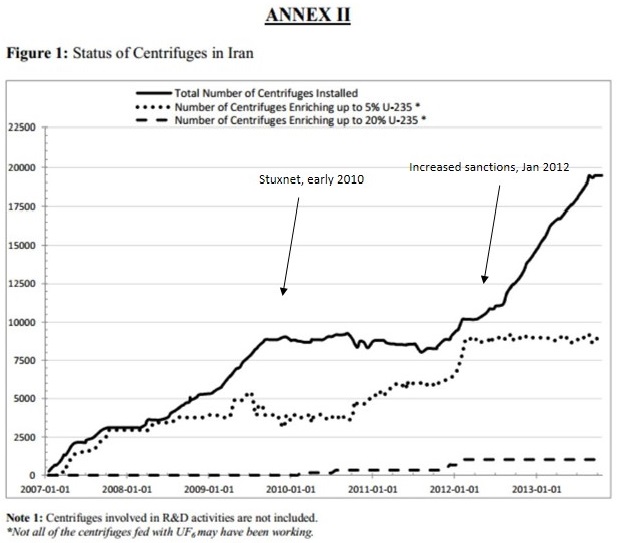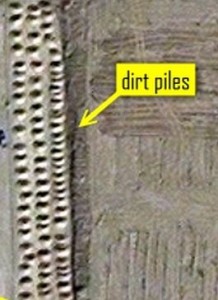Latest Parchin Accusation: Centrifuges!
At long last, a conspiracy theory on Iran’s Parchin site has surfaced that is too crazy to have come from David Albright and his merry band at the Institute for Science and International Security. Recall that Iran has played the ISIS folks expertly on Parchin, giving them a series of interesting things to look at in satellite images of the site. Iran’s manipulations hit their high point when they covered a number of buildings in pink tarp, provoking an especially cute level of concern over just what those tarps might be hiding.
The folks at Debka.com, though, have put themselves firmly into the position of world leaders when it comes to Parchin conspiracy theories. You remember the Debka folks, they are the ones who initially claimed that Israel’s Iron Dome had successfully shot down two incoming missiles when it turns out that the explosions that were heard were actually just Iron Dome misfiring in the absence of any incoming fire earlier this month.
Here is Debka’s glorious new theory, which follows on their recounting of the recent news that Iran has actually moved faster than the initial schedule in the interim agreement with the P5+1 powers on removing its stock of 20% enriched uranium and that they will redesign the Arak reactor to produce less plutonium:
But only on the face of it: This scenario ignore Tehran’s duplicity and conveniently passes over the sudden spurt in Iran’s production of low, 5-percent grade enriched uranium and the covert smuggling of the surfeit to the Parchin military facility of near Tehran for its secret upgrade to 20 percent, a level which can be rapidly enriched to weapons grade.
So with one hand, Tehran has reduced its low-grade enriched uranium stocks, but with the other, has smuggled a sizable quantity of those stocks for further enrichment to a facility barred to nuclear watchdog inspectors.DEBKAfile’s intelligence sources reveal that 1,300 kilos of low-grade material has been transferred to Parchin and 1,630 advanced centrifuges have been installed there for rapid upgrade work.
Okay, then. Even though every single report from the IAEA has shown that every bit of uranium enriched by Iran has been accounted for and that none has been diverted (see this article from 2012 fear-mongering that grudgingly admits no diversion of material), Debka now wants us to believe that since Iran is removing its stock of 20% enriched uranium, it is doing so as a way to hide their diversion of over a ton of uranium that has been enriched to 5%. Oh, and at the same time, they have secretly installed 1630 centrifuges at Parchin.
But then the Debka conspiracy really starts to fall apart. It appears that they are only claiming that Iran will use these 1600 secret centrifuges to enrich the 5% uranium to 20%, rather than taking it to weapons grade of more than 90%. If we use the standard figures of approximately 25 kg of weapons grade uranium for one bomb and the numbers in this article (where one ton of natural uranium feed leads to up to 130 kg of 5% uranium and then 5.6 kg of weapons grade material), then 1300 kg of 5% uranium could be enough for two bombs.
It’s a good thing Debka is only claiming that conversion from 5% to 20% enrichment would be carried out with these secret centrifuges at Parchin, because getting to weapons grade with so few centrifuges in any sort of reasonable time frame is problematic. If we consult this document from Albright’s group, Figure 1A (on page 5 of the pdf), we see graphs for the amount of time needed to get to 25 kg of weapons grade uranium under scenarios of various numbers of centrifuges and various amounts of 20% enriched uranium. With Debka’s new conspiracy, if they were positing breakout to weapons grade, then we need to start at zero 20% uranium available and look between the 1000 and 2000 centrifuge scenarios. For 1000 centrifuges, ISIS calculates just over 24 months to produce one bomb’s worth of material, while for 2000 centrifuges, that time drops to 14 months. Interpolating for 1600 centrifuges would give us about 20 months of secret work with these 1600 secret centrifuges using 1300 kg of material secretly hidden from a previously perfect mass balance of Iran’s enrichment work.
Iran has already responded to this wild claim by Debka: Read more →


